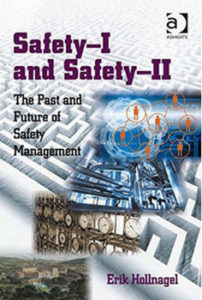 As this year comes to an end, we will be looking at our overall performance to see how we did and to plan for 2017. We will usually look at our injury statistics like the total recordable injury rate and try to determine how we performed. Often quite independently, others will look at other performance indicators to see how they came out. We act as if these are independent of each other, but in our organizations everything is connected so all aspects of performance influence each other. Everything happens through the people. All the parts are interconnected. Excellence in safety performance is strongly related to our total performance because it all works through the will of the people.
As this year comes to an end, we will be looking at our overall performance to see how we did and to plan for 2017. We will usually look at our injury statistics like the total recordable injury rate and try to determine how we performed. Often quite independently, others will look at other performance indicators to see how they came out. We act as if these are independent of each other, but in our organizations everything is connected so all aspects of performance influence each other. Everything happens through the people. All the parts are interconnected. Excellence in safety performance is strongly related to our total performance because it all works through the will of the people.
We traditionally try to apply safety and other metrics to our organizations in a machine-like fashion. We see that something needs to improve so we push harder as if we are pushing a wagon up hill. Too many regulators and managers sit in their offices trying to imagine what needs to be done and write a new procedure or rule so that things will be better. Then they issue edicts pushing everyone harder. However, the work as imagined is never the same as the work as done. Why do managers think that sitting, bound to their office chairs, that they know everything? How can they? Then at the end of 2017 we will do this all over again trying to understand why things did not get better. Around and around we go!
We break this vicious cycle by opening up ourselves to a different way of thinking, seeing and being.
 Work-as-imagined and work-as-done are ideas developed by Erik Hollnagel in his book, Safety-I and Safety-II (2014. Ashgate Publishing Ltd., UK). Safety I is our traditional top-down management approach to safety management where rules and procedures are issued by those far from the actual work. This is like the approach discussed in the proceeding paragraph. I think that a lot of people are trying to do good safety work from the Safety I perspective, but the results are not improving fast enough.
Work-as-imagined and work-as-done are ideas developed by Erik Hollnagel in his book, Safety-I and Safety-II (2014. Ashgate Publishing Ltd., UK). Safety I is our traditional top-down management approach to safety management where rules and procedures are issued by those far from the actual work. This is like the approach discussed in the proceeding paragraph. I think that a lot of people are trying to do good safety work from the Safety I perspective, but the results are not improving fast enough.
For example, the Bureau of Labor Statistics (BLS) recently reported that the rate for nonfatal injuries and illnesses per 100 people dropped to 3.0 in 2015 from 3.2 in 2014 and 3.3 in 2013. That is a 10% drop over three years. That is way too slow! In 2015 2,900,000 injuries were reported. That is WAY TOO MANY people getting hurt. In an earlier paper the BLS reported that the number of fatalities has hovered around 4,700 people a year for the last 5 years. This is WAY TOO MANY!
This is not just a US problem. For example, Worksafe, New Zealand recently reported that the health and safety laws have had little effect on reducing fatalities further.
While driving safety from the top has had benefits historically, the effort is having less and less impact. But when we change our approach to working with the people to co-create our future, things change for the better quite quickly. This is true! It’s proven!
In the work of Richard N. Knowles and Associates, we approach the organization as if it is a living organism. Time after time coming out of our Safety Excellence Workshops, the performance improves quickly. When we engage with the people this way and help them to co-create their safety future, building on the positive strengths of the people, safety and all other aspects of their work get better quickly. For example, when I was the Plant Manager at the DuPont Belle Plant in West Virginia we worked this way, and our injury rates dropped by over 95% and earnings rose 300% in just three years. This is similar to Hollnagel’s Safety II approach.
Whenever we, at Richard N. Knowles Associates, work in organizations the safety and total performance improves quickly. Everything happens through the force of the will of the people. We release this force helping the people to co-create their shared future. Then we show them how to sustain their work for the years ahead. All dimensions of the business improve; costs are lower, productivity is higher, morale is better and far more people are working safely.
Call us at 716-622-6467 so you can release the positive, creative forces in your organizations quickly!





